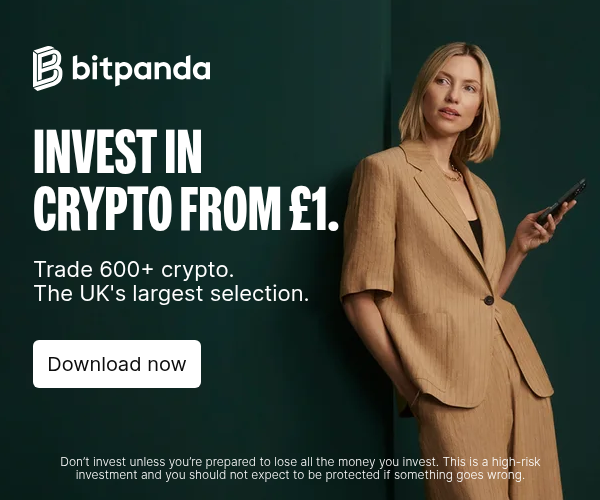IDENA is the first Proof-of-Person blockchain based on human-centric consensus. Anyone connected to the Internet can become a miner by passing a validation. Today the network has 12k+ validated people and 2K+ mining nodes which make IDENA one of the most decentralized blockchains. Watch the explanatory video: https://youtu.be/
Chris: Idena provides a crypto identity based on the blockchain. How does the system identify unique individuals without any KYC requirements?
Andrew: It is important to mention that cryptoidentity was not the original goal of creating Idena. Originally, we wanted to build a blockchain that can be mined by every human on earth without any initial investment. To reach this goal, we had to formalize a human on blockchain. Since this entity was made anonymous and required no personal data, we called it cryptoidentity. Cryptoidentity is the basis of the human-centric blockchain. It guarantees that the blockchain can not be captured by an individual capitalist who owns more than 50% of the total token supply. This risk of big players overtaking the network is adherent not only to PoS blockchains but also to PoW blockchains where big players can use their resources to buy mining farms and accumulate more than 50% of the network hash rate. We believe that it is only cryptoidentity that allows creating truly sustainable network decentralization.
Your crypto identity is both your proof of humanity and proof of uniqueness. We call it Proof-of-Person (PoP) protocol. Idena is based on a network of people mutually validating their humanness and uniqueness.
Chris: How does one prove to be a unique human to be able to mint Idena token?
Andrew: Idena protocol is constantly minting coins to reward people for participating in validation ceremonies to prove their uniqueness and for doing the work to support the network.
To prove that you are a unique human, you need to pass a regular checkpoint ritual — synchronous validation session. The validation requires solving flips. Flips are puzzles created by other network participants. These puzzles are easy to solve for a human but difficult for a bot. You can read more about flips in our blog post.
The uniqueness of participants is proven by the fact that all identities must solve flips synchronously. Flips are decrypted at the same time worldwide. Every human gets a unique set of tests that they have to solve. A single person is not able to validate themselves multiple times because the timeframe to submit the answers is limited.
Chris: Following from previous question, how does one mint the Idena token? What is the expected date of validation and price of the cryptocurrency?
Andrew: Idena coins - iDNA - are minted by the protocol and equally distributed to all validated identities as rewards for supporting the network. Every validated participant is encouraged to do useful work for the network:
- To run a mining node and to validate new blocks to support the security of the network;
- To create and to solve flips to ensure humanness and uniqueness of all validated identities;
- To invite new users and to help the network to grow and scale. This resource sharing is rewarded with iDNA Coins minting.
Unlike many other blockchains, in Idena you don’t need a lot of resources like computing power or money to create value for the network and to support it. You can start mining even on your old laptop, no need to spend money on an expensive mining rig or to invest an enormous sum of money in a validator's stake. And even with your old laptop, you get the same reward as every other miner. The idea of equality is the foundation of Idena: every human gets the same reward, be it a billionaire mining on a supercomputer or a high school student running Idena node on an average PC in their computer science class.
Everyone can validate their cryptoidentity and start mining. But one successful validation doesn’t mean that your cryptoidentity is validated forever. You have to prolong the status of your cryptoidentity every epoch. This is done to prevent people from validating new identities every new validation thus creating multiple identities.
The validation session schedule is set based on the size of the network, although the time is always the same - 13:30 UTC. Now an epoch is 21 days long, but the bigger the network is, the less frequently the validation sessions happen. You can find the date of the next validation on the main page of the Idena website, in the Web App, or in the Desktop App.
At the current price of $0.11 for 1 iDNA, you can earn up to $5.70 per epoch for mining and up to $33 for a validation. Every day the protocol mints a fixed amount of iDNA which is distributed as rewards for mining and validation. As the network grows, this amount is distributed among more and more participants, so individual rewards go down. It creates the scarcity of iDNA: the earlier you join the network, the more rewards you get. Now, when the network has 12K identities, each identity on average can get around 121 iDNA per epoch provided everyone is mining. When the network reaches 50K identities, this reward will change to 30 iDNA per epoch. And with 500K identities in the network, individual reward will be only 3 iDNA per epoch.

As the individual rewards go down, the coin becomes more scarce and consequently more valuable. At the same time, the coins are burnt for transaction fees, oracle voting expenses, mining penalties, as killed cryptoidentity stakes, and iDNA utilities. Also, network participants who use a lot of iDNA (e.g. for decentralized ads) need to buy it on the market. All these factors create market pressure and drive the price of iDNA up.
Chris: Furthermore, Idena builds a community that allows equal voting rights and mining income. What are the other benefits of the Idena community?
Andrew: Community is in the very DNA of Idena. Community drives the growth of the network. Community mechanics like invitations and flips are deeply integrated with the protocol mechanics. We believe that it is the community that in due time will develop and manage the Idena ecosystem based on DAO governance principles. So, we are glad to witness how the Idena community grows, gets stronger and more active.
Now Idena community is forming a DAO governed by people. This DAO can be used for funding any project. For instance, Ethereum mints $8bln every year to pay the miners for the safety of the network, and there are no voting mechanics to spend even a small fraction of that money for financing common goods. Idena DAO has a treasury called the community wallet. The money for this DAO treasury is minted by the protocol. Community wallet can be used to fund any community initiative if the community supports that initiative by voting. Everyone wants to know that their voice makes a difference. And by participating in the Idena community everyone makes history.
About IDENA:
Chris: Similarly, how does Idena eliminate the possibility of duplicate or multiple accounts by a single individual?
Andrew: The cryptoidentity in Idena is semi-unique. It means you can easily validate one cryptoidentity. You can validate two identities, but it is much harder. And it is impossible for one person to validate many identities at the same time.
Also, it is not feasible for one person to validate two identities. It makes more sense to focus on one identity during validation and get a higher score than to rush it and to do two identities at the same time and get low scores for each of them. There are several reasons behind that:
- Identities with low scores don’t get invites and miss invitation rewards;
- Validation score can be used as the factor of trust in voting and governance: the higher the score, the higher the trust to the identity;
- When you try to validate multiple identities you risk failing validation and losing the stake which can be quite painful.
Chris: Idena investors always want to have the latest news on the cryptocurrency. How can investors get regular and real time updates?
Andrew: Idena community members get updates via these community channels:
- Twitter and Telegram for quick updates;
- Medium for long reads and thought-provoking topics;
- Discord for sharing ideas, community discussion and sharing initiatives.
We publish a community report called Idena Chronicles every epoch or every 21 days. There we post updates about the key metrics of the network, the progress of the team, and the events in the community.
Chris: In the end, please highlight what more is listed on your roadmap? What are the key milestones you want to achieve in the next 2 years.
Andrew: Today the crypto industry counts 100-200 mln users. We want to allow mining blockchain for everyone who wants to do it, without any investment in hardware or staking. We want to confront the main pow/pos blockchains that structurally resemble big corporations with a small group of people making decisions.
We want the income from fees that the miners are now getting to go to common users. We want decentralized apps to benefit the people who don’t use smart contracts now because they are afraid to buy crypto, but are ready to become miners and to start using decentralized apps.
This year the size of the network is 12K. It is as much as the population of Tuvalu. Next year we aim to overgrow Lichtenstein, and then we’ll try to grow to the size of Iceland.
In 2022, we want to improve network scaling and move on with sharding, grow the Idena ecosystem with smart contracts and dApps, and adopt more use cases and integrations such as identity bridging, attention economy, and publication platform. We have built a solid basement, now it’s time to build on top.





 usdt
usdt bnb
bnb

